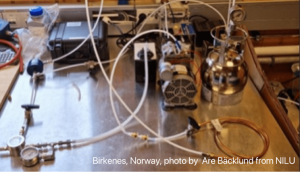The interlinkages between air pollution and climate change are manifold, even though discussions at the international level tend to often take place separately: air pollutants and greenhouse gases are often emitted by the same sources, leading to complex chemical interactions in the atmosphere. A warmer atmosphere, for example, will have implications for air quality, as it is expected that more ground-level ozone (O3) is formed under those conditions, affecting our health and climate.
As we witness more frequent extreme weather events as a result of a changing climate, such as the heatwaves that affected many parts of Europe and the US last summer, we need to be able to model how extreme weather events impact air pollution to inform decision-making to reduce emissions and mitigate their impact. In this context, experts from the Task Force on Measurements and Modelling under the UNECE Convention on Long-range Transboundary Air Pollution (Air Convention) discussed findings and lessons learnt from a field measurement campaign carried out in the summer of 2022 at their annual meeting this last week (Warsaw, 10-12 May 2023).
The campaign led to the collection of an unprecedented set of measurements of 146 individual types of volatile organic compounds (VOCs) and secondary organic aerosol markers at 27 monitoring sites in 13 State Parties to the Convention. VOCs react with nitrogen oxides (NOx) in the presence of sunlight to form ground-level ozone, which has severe impacts on human health (e.g. reduced lung function, asthma, fatigue and headaches), and on the climate as it also is a greenhouse gas.
Location of the 27 air pollution monitoring stations having collected VOC samples during the campaign in the summer 2022.
This new knowledge base is expected to shed light on the main sources of ground-level ozone and aerosol air pollution and the specific VOCs that are most abundant and prone to contribute to its formation during intense heat waves and to thereby enable the development of models to reproduce such events, to guide targeted policy responses.
The Air Convention’s 1999 Protocol to Abate Acidification, Eutrophication and Ground-level Ozone (Gothenburg Protocol), as amended in 2012, includes legally binding emissions reduction commitments for 2020 and beyond for major air pollutants: sulphur dioxide (SO2), nitrogen oxides (NOx), ammonia (NH3), volatile organic compounds (VOCs) and fine particulate matter (PM2.5). It is the only legally binding instrument in the world to reduce levels of key atmospheric pollutants on a broad regional basis.
The UNECE Air Convention, adopted in 1979, provides a unique and binding regional instrument through which 51 parties in the pan-European and North American regions cooperate to deliver emission reductions for the major pollutant substances.


